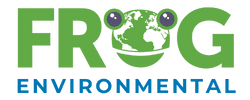What to Do After a Benchmark Exceedance Under the Industrial General Permit (IGP)
If your stormwater sampling results show pollutant levels above the benchmark values under California’s Industrial General Permit (IGP), don’t panic — but don’t ignore it either. A benchmark exceedance doesn’t automatically mean you’re in violation, but it does trigger specific next steps to keep your facility in compliance and prevent costly enforcement. Here’s a clear, step-by-step guide on what to do next, how to respond properly under the IGP, and when to consider upgrading your Best Management Practices (BMPs) or treatment systems.
1. Confirm Your Results
Start by reviewing your lab report carefully. Verify that:
The lab used certified methods and proper QA/QC documentation.
Sample collection and chain-of-custody were correctly followed.
The sample truly represents a Qualifying Storm Event (QSE) (≥0.1 inch of rain, 48 hours of dry weather).
It’s always smart to compare results to past sampling data. Sometimes a single high value might result from site conditions during a specific storm, not an ongoing trend.
If you’re uncertain, Frog Environmental can help interpret your results and determine whether an Exceedance Response Action (ERA) level applies.
2. Understand What the Benchmark Exceedance Means
Under the IGP, benchmark exceedances can trigger two response levels:
Level 1 ERA: When one or more pollutants exceed benchmarks at any sampling location during a reporting year.
Level 2 ERA: When the same pollutant exceeds benchmarks for two consecutive reporting years.
If you’ve just received your first exceedance, you’re likely entering Level 1 ERA status for that pollutant.
3. File a Level 1 ERA Report
Within January 1–July 1 of the following reporting year, you must:
Designate a Qualified Industrial Stormwater Practitioner (QISP) to oversee the response.
Conduct a Level 1 ERA Evaluation to determine the source of the exceedance and identify corrective actions.
Submit a Level 1 ERA Report via SMARTS (Stormwater Multiple Application and Report Tracking System).
This report documents the likely causes of the exceedance and outlines planned improvements.
Tip: Facilities that act quickly and document corrective actions early often avoid escalation to Level 2 the next year.
4. Update Your BMPs
Benchmark exceedances are often a signal that existing BMPs aren’t fully effective. Use your Level 1 Evaluation to guide updates.
Common corrective actions include:
Improving housekeeping and material storage
Installing drain covers, filter socks, or inlet protection
Covering outdoor materials or process areas
Enhancing sweeping or maintenance schedules
Adding sediment control or oil/water separators
These low-cost measures often deliver significant pollutant reductions before structural treatment is necessary.
5. When to Bring in Treatment Systems
If you’ve implemented strong BMPs and still see exceedances (especially for dissolved metals like zinc or copper), it may be time to consider a stormwater treatment system.
Frog Environmental’s StormPROOF® Treatment Systems are designed for industrial applications and can be customized with advanced filtration media like MetalPROOF™ or CarbonPROOF™ to target your site’s specific pollutants.
Our systems are modular, scalable, and proven to remove a wide range of contaminants, helping you get back below benchmarks and out of Level 2 ERA risk.
6. Document and Follow Through
Once corrective actions are complete:
Document updates in your SWPPP (Storm Water Pollution Prevention Plan).
Train staff on new procedures and BMPs.
Take follow-up photos and notes to demonstrate implementation.
If your improvements are structural or operational, note them in SMARTS as part of your annual report. Regulators value transparency and complete documentation can prevent unnecessary follow-ups.
7. Stay Ahead of Next Season
Don’t wait for another exceedance to start planning. Facilities that prepare now by reviewing site conditions, inspecting BMPs, and scheduling maintenance, often see cleaner results in the next rainy season.
Frog Environmental offers comprehensive IGP compliance services, including:
Level 1 and Level 2 ERA evaluations and reports
SWPPP updates
Sampling, lab coordination, and SMARTS uploads
BMP installation and maintenance
Custom treatment system design and support
Take the Stress Out of Stormwater Compliance
A benchmark exceedance doesn’t have to derail your compliance, it’s simply a signal to act. With the right guidance and timely corrective actions, your facility can get back on track quickly and confidently.
Let Frog Environmental manage the process for you, from evaluation and reporting to BMP upgrades and treatment systems.
📞 Contact us today or visit www.frogenv.com to schedule an IGP compliance review before the next storm hits.
